Abstract
Rats pressed a nose key for brain stimulation reinforcement presented on a fixed-interval schedule. Stimuli were drawn at random from a continuum of 12 white noise intensities in the range 62-95 decibels, spaced in 3 decibel steps. Experiment 1 varied the number of stimuli and the reinforcement contingencies associated with them. In Condition I (baseline) all stimuli signaled reinforcement; in Conditions II and III stimuli from one half of the continuum signaled reinforcement and those from the other half, extinction. However, in Condition II the 6 stimuli from the middle of the continuum were omitted. Experiment 2 held constant the number of stimuli and varied their spacing. In Condition I, each of 6 sounds signaled reinforcement. In Conditions II and II, three stimuli from one half of the continuum signaled reinforcement and three from the other half, extinction. However, in Condition II the stimuli were near the extremes of the continuum (Stimuli 1, 3, 4, 9, 10, 12). Condition III replaced Stimulus 3 with Stimulus 6 and Stimulus 10 with Stimulus 7. Behavioral contrast was seen in an increase over baseline in response rate to the stimuli associated with the constant schedule component when the variable component was changed to extinction. Dimensional contrast was seen in a further elevation of rate to intermediate positive stimulus values when stimuli were added to the border region between positive and negative values.
Full text
PDF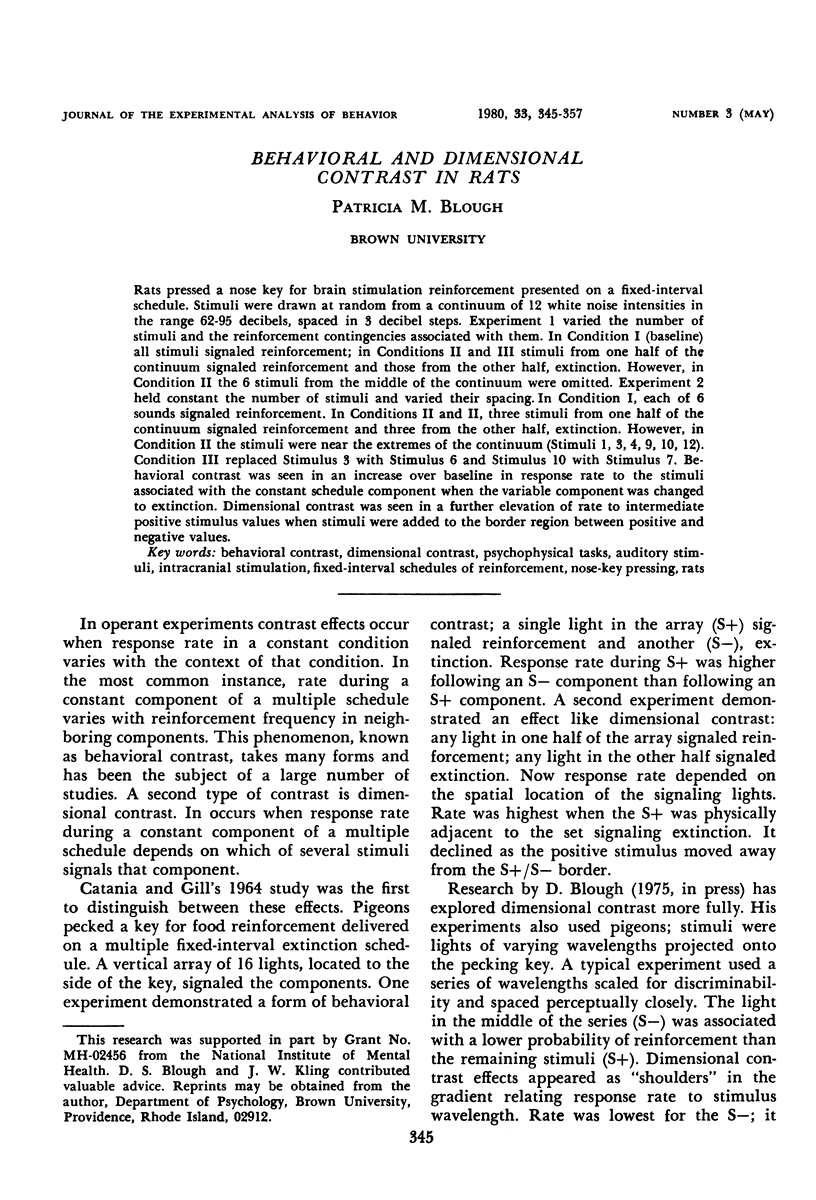
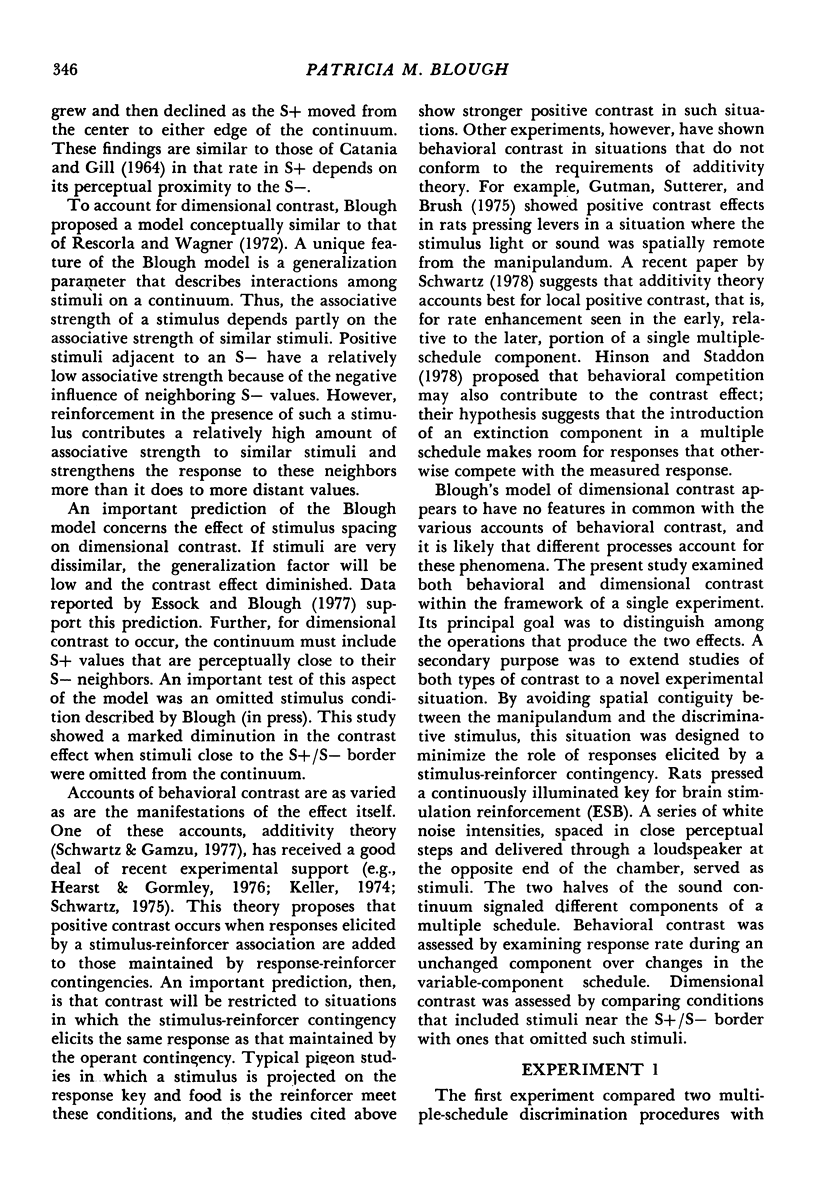
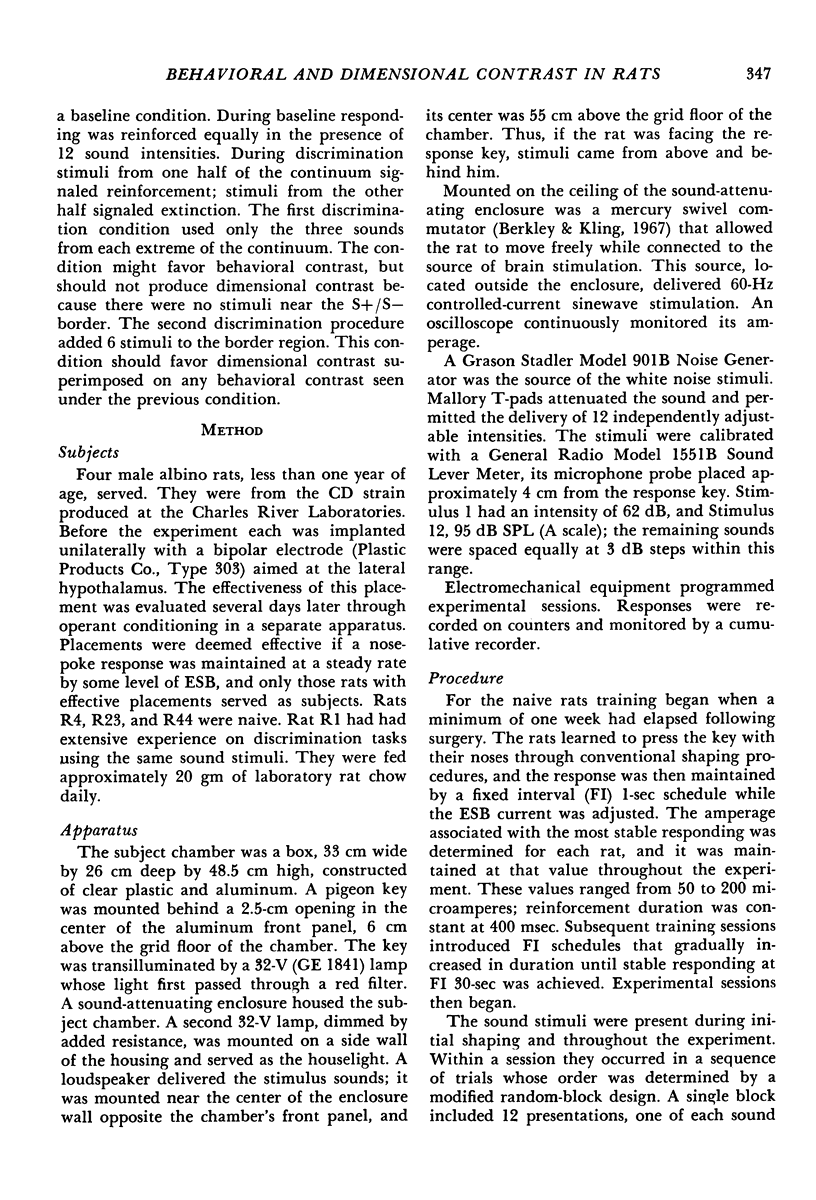
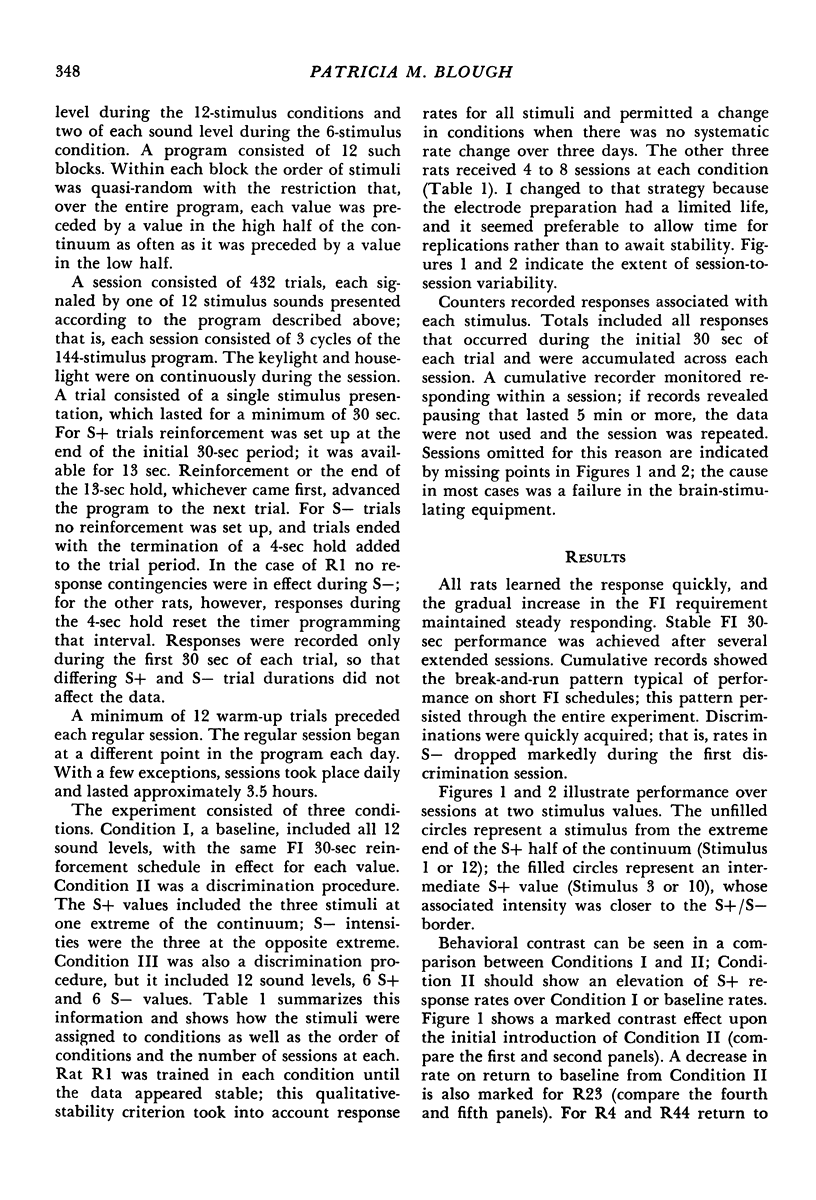

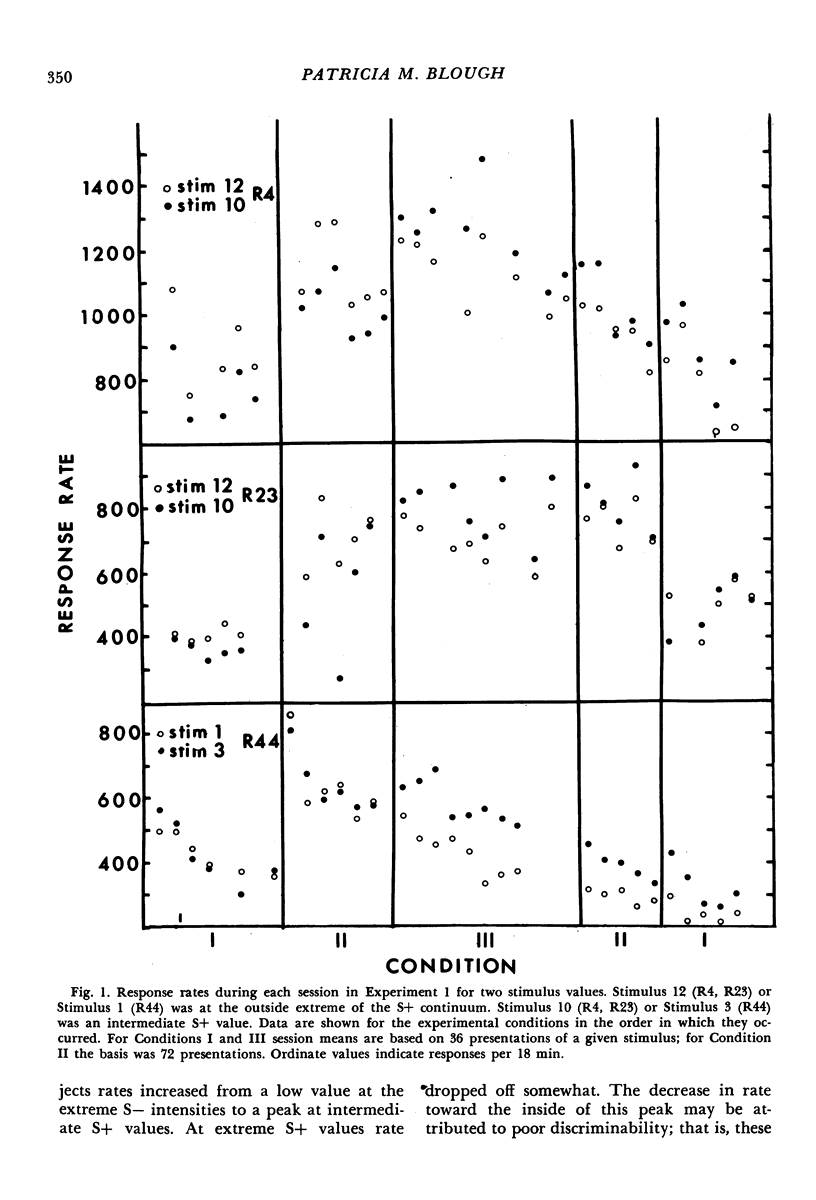
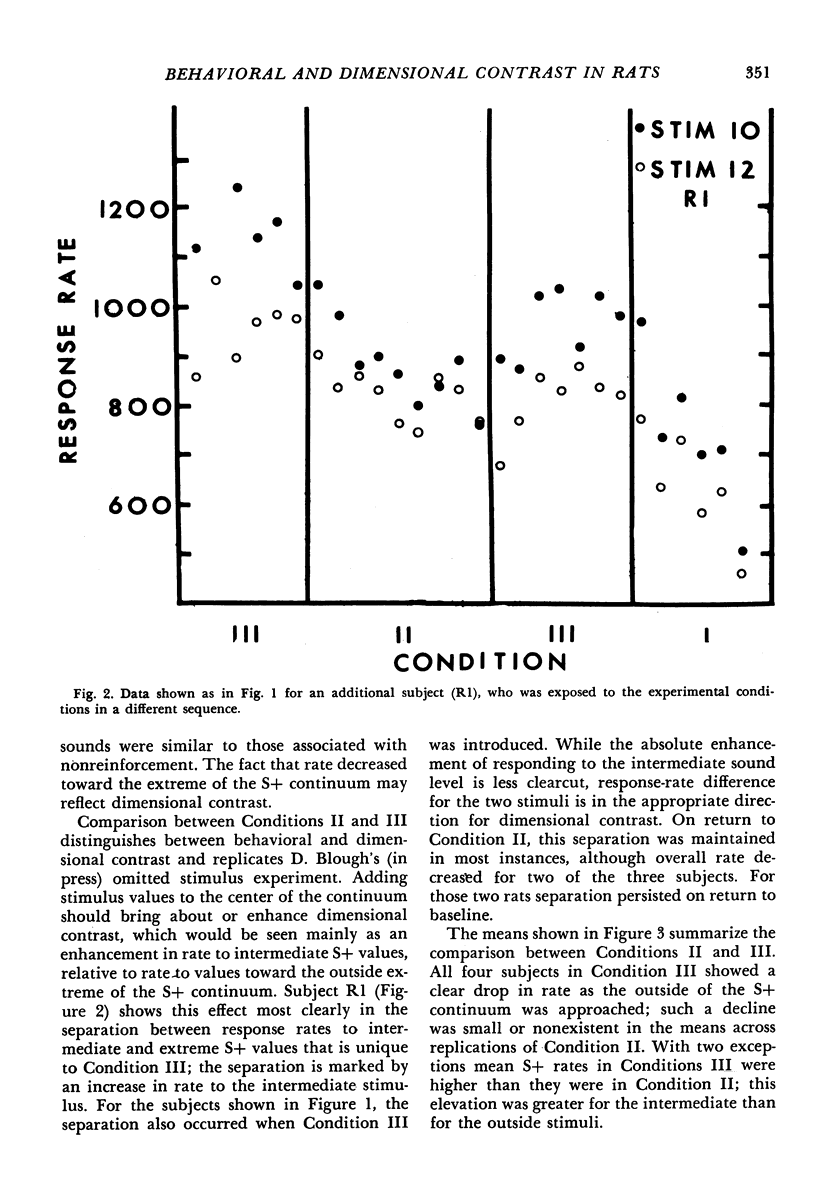
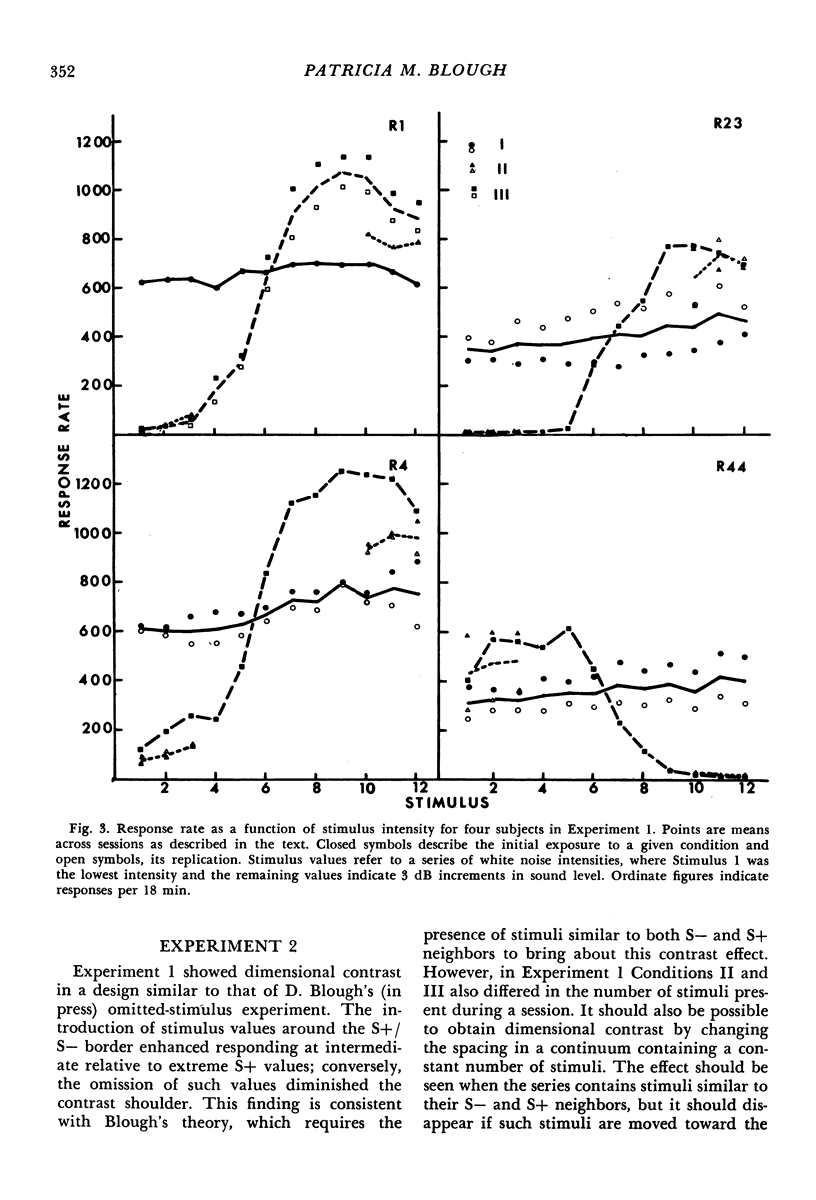
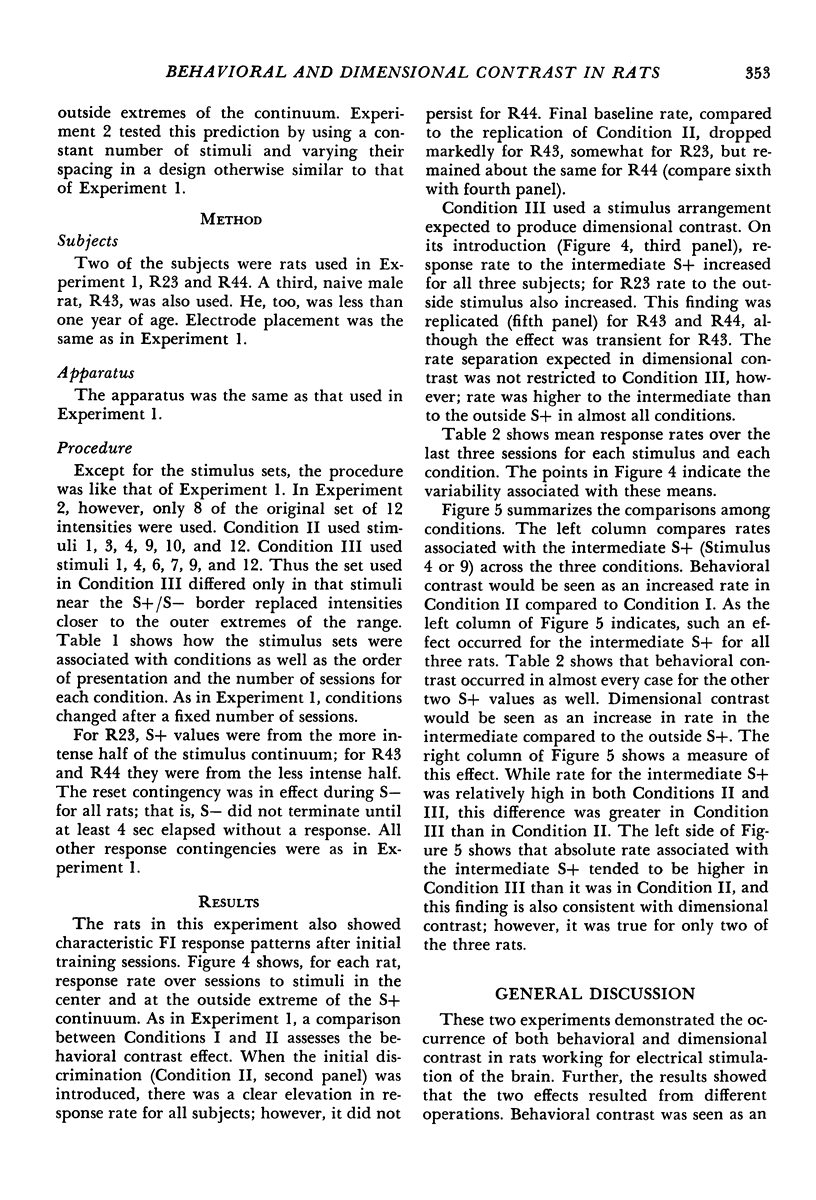
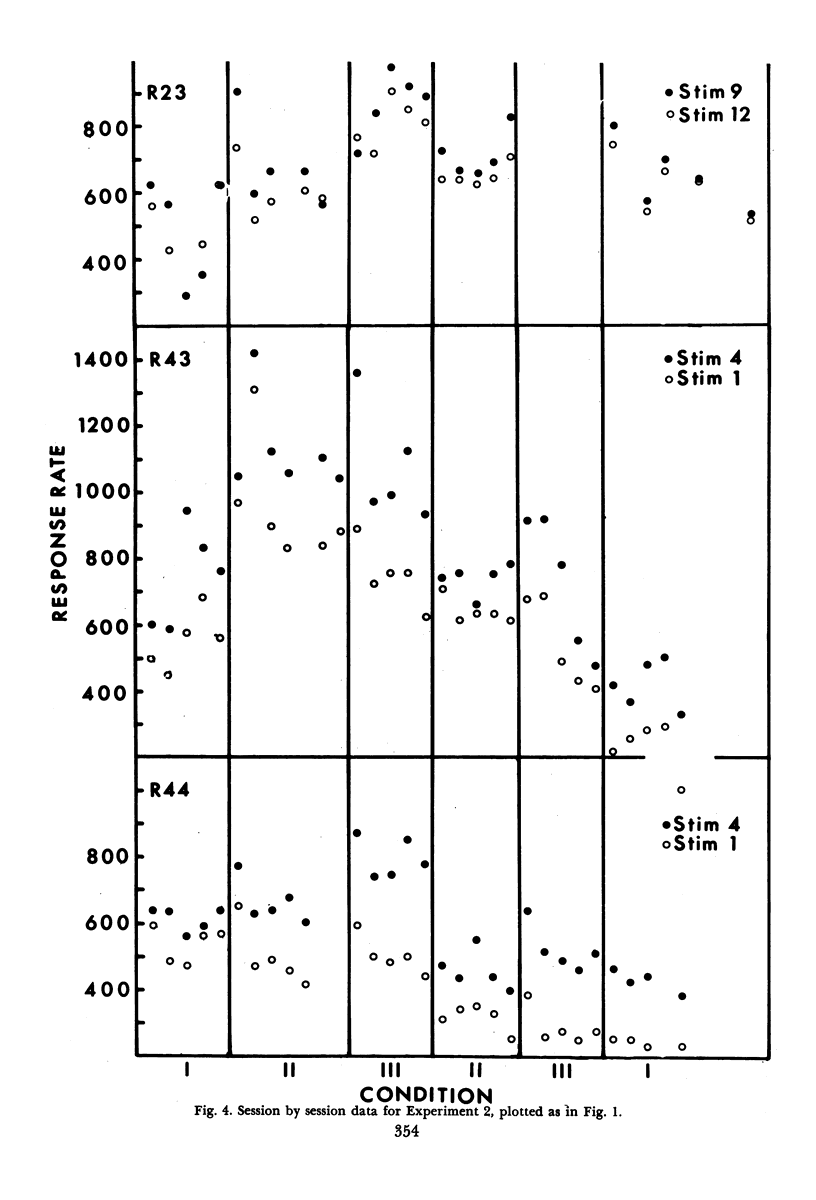
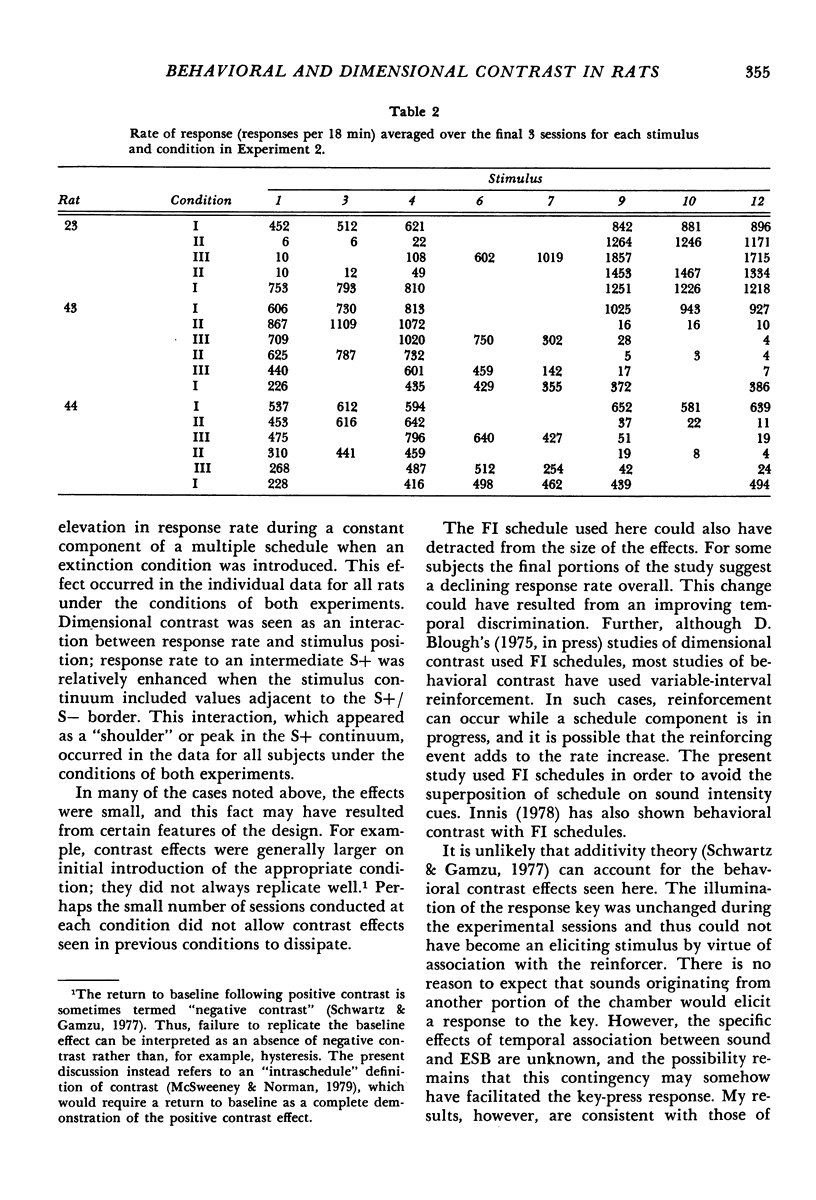
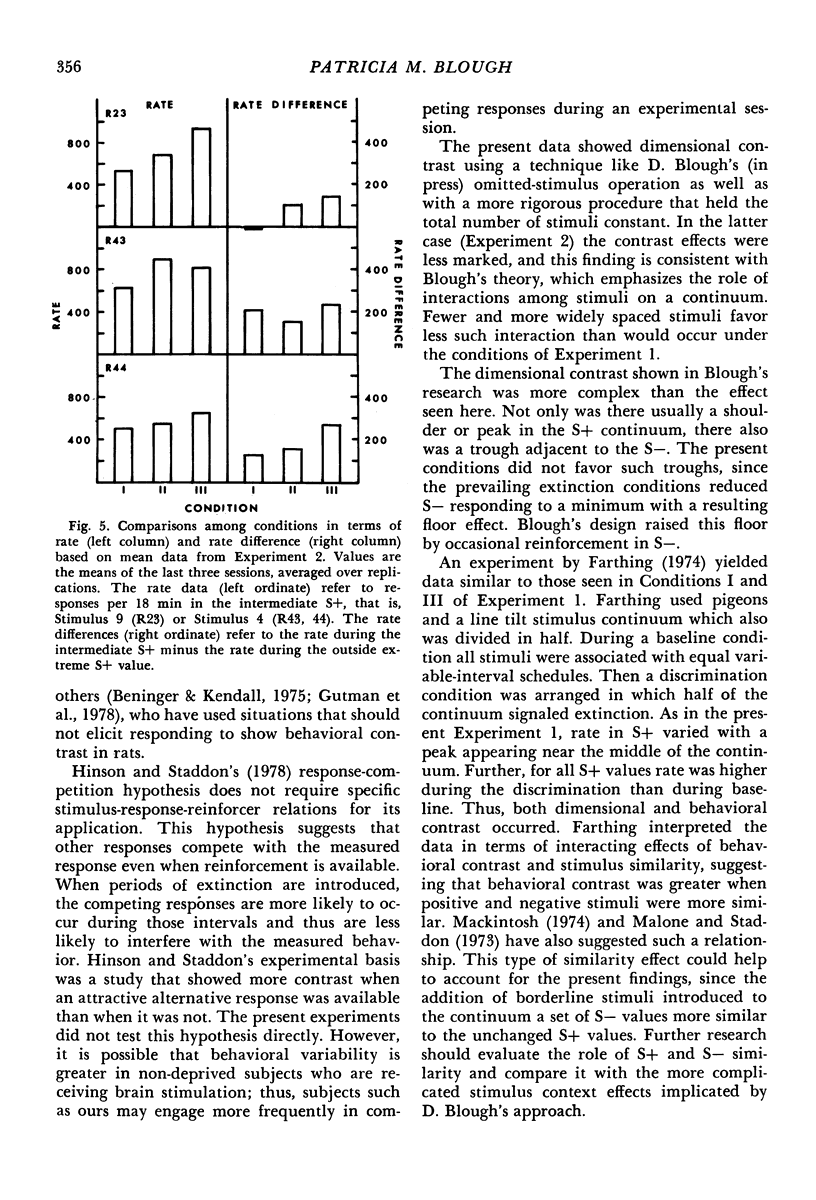
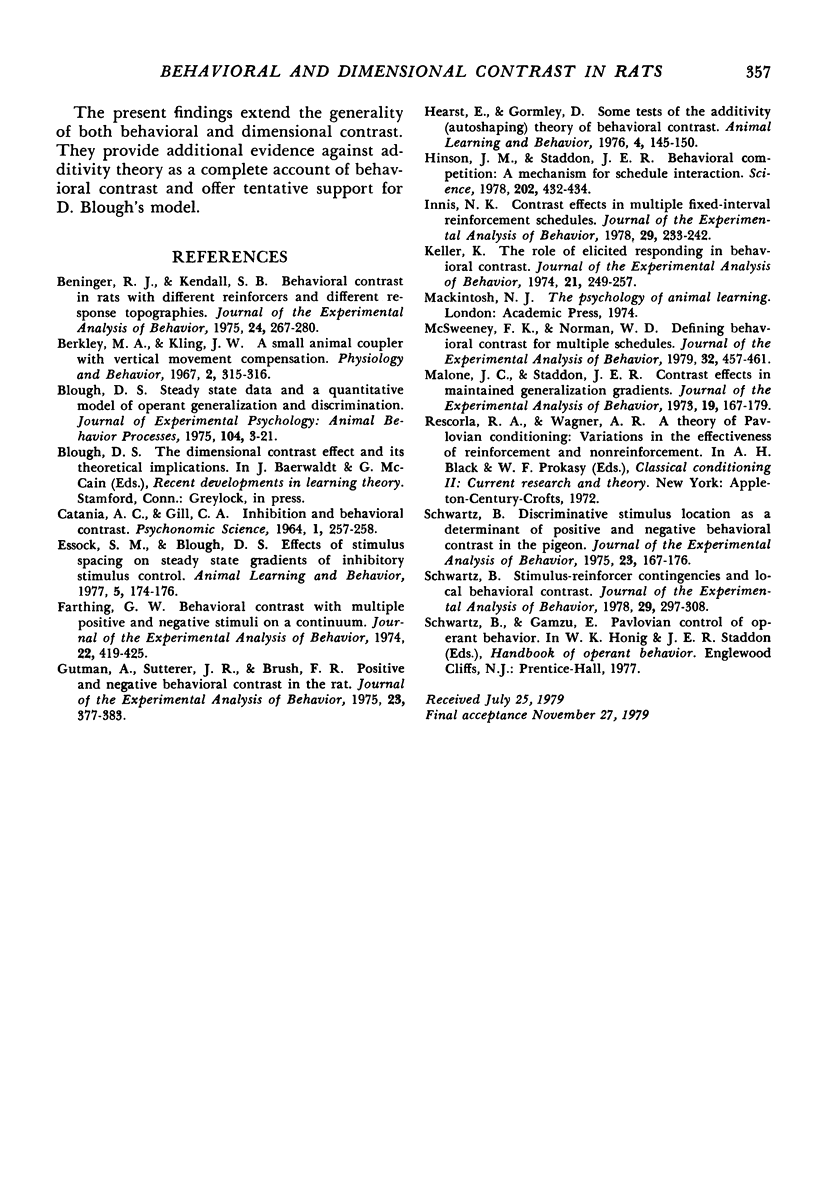
Selected References
These references are in PubMed. This may not be the complete list of references from this article.
- Beninger R. J., Kendall S. B. Behavioral contrast in rats with different reinforcers and different response topographies. J Exp Anal Behav. 1975 Nov;24(3):267–280. doi: 10.1901/jeab.1975.24-267. [DOI] [PMC free article] [PubMed] [Google Scholar]
- Farthing G. W. Behavioral contrast with multiple positive and negative stimuli on a continuum. J Exp Anal Behav. 1974 Sep;22(2):419–425. doi: 10.1901/jeab.1974.22-419. [DOI] [PMC free article] [PubMed] [Google Scholar]
- Gutman A., Sutterer J. R., Brush F. R. Positive and negative behavioral contrast in the rat. J Exp Anal Behav. 1975 May;23(3):377–383. doi: 10.1901/jeab.1975.23-377. [DOI] [PMC free article] [PubMed] [Google Scholar]
- Hearst E., Gormley D. Some tests of the additivity (autoshaping) theory of behavioral contrast. Anim Learn Behav. 1976 May;4(2):145–150. doi: 10.3758/bf03214025. [DOI] [PubMed] [Google Scholar]
- Hinson J. M., Staddon J. E. Behavioral competition: a mechanism for schedule interactions. Science. 1978 Oct 27;202(4366):432–434. doi: 10.1126/science.705334. [DOI] [PubMed] [Google Scholar]
- Innis N. K. Contrast effects in multiple fixed-interval reinforcement schedules. J Exp Anal Behav. 1978 Mar;29(2):233–242. doi: 10.1901/jeab.1978.29-233. [DOI] [PMC free article] [PubMed] [Google Scholar]
- Keller K. The role of elicited responding in behavioral contrast. J Exp Anal Behav. 1974 Mar;21(2):249–257. doi: 10.1901/jeab.1974.21-249. [DOI] [PMC free article] [PubMed] [Google Scholar]
- Malone J. C., Staddon J. E. Contrast effects in maintained generalization gradients. J Exp Anal Behav. 1973 Jan;19(1):167–179. doi: 10.1901/jeab.1973.19-167. [DOI] [PMC free article] [PubMed] [Google Scholar]
- McSweeney F. K., Norman W. D. Defining behavioral contrast for multiple schedules. J Exp Anal Behav. 1979 Nov;32(3):457–461. doi: 10.1901/jeab.1979.32-457. [DOI] [PMC free article] [PubMed] [Google Scholar]
- Schwartz B. Discriminative stimulus location as a determinant of positive and negative behavioral contrast in the pigeon. J Exp Anal Behav. 1975 Mar;23(2):167–176. doi: 10.1901/jeab.1975.23-167. [DOI] [PMC free article] [PubMed] [Google Scholar]
- Schwartz B. Stimulus-reinforcer contingencies and local behavioral contrast. J Exp Anal Behav. 1978 Mar;29(2):297–308. doi: 10.1901/jeab.1978.29-297. [DOI] [PMC free article] [PubMed] [Google Scholar]


